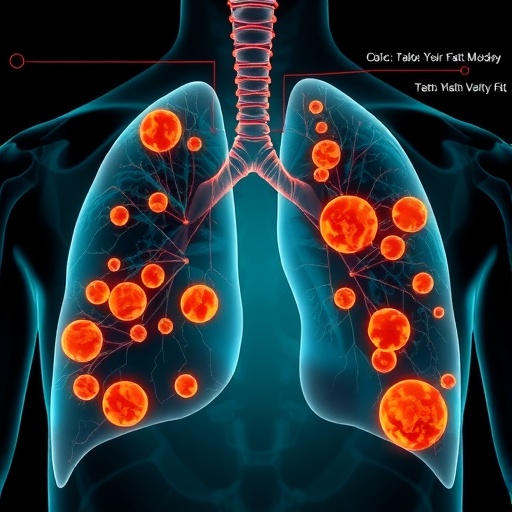
Recent advancements in space exploration have rekindled interest in the physiological challenges posed by microgravity, particularly concerning cardiovascular health. As humanity prepares for longer missions, such as extended stays on the Moon or manned missions to Mars, understanding how to counteract the detrimental effects of low Earth orbit on cardiovascular systems is paramount. Dr. A. Silburn’s groundbreaking research provides critical insights into these issues, highlighting potential strategies for safeguarding the heart in the unique environment of space.
Microgravity creates a variety of physiological changes in humans, most notably affecting the cardiovascular system. When astronauts transition to space, they experience fluid shifts that lead to a redistribution of blood and other bodily fluids. This phenomenon can result in an alteration of heart morphology and function, causing blood vessels to lose tone and the heart to adapt in ways that may not be immediately reversible upon return to Earth. Understanding these changes is the first step towards developing effective countermeasures.
One of the principal concerns involves orthostatic intolerance, where individuals may struggle to maintain blood flow to the brain upon return to a gravitational environment. This condition can impair cognitive function and increase the risk of fainting. Studies indicate astronauts may experience post-flight orthostatic hypotension, which can significantly impact their ability to perform at optimal levels after long-duration missions. Addressing this concern is essential for both safety and performance during space missions.
The body’s cardiovascular system relies heavily on the gravitational pull to maintain optimal functioning. In a microgravity environment, the heart doesn’t need to work as hard against gravity to circulate blood. This reduced workload can lead to a decrease in the overall strength and efficiency of the heart muscle. To combat this, research has shown that resistive exercise regimens, similar to those used by bodybuilders on Earth, may help maintain cardiovascular health and muscle tone during missions.
Another essential aspect discussed by Silburn is the role of nutrition in preserving cardiovascular health in space. Microgravity can influence metabolic processes, leading astronauts to experience changes in their nutritional requirements. Ensuring an adequate supply of key vitamins, minerals, and antioxidants during space missions can play a significant role in mitigating health risks. Ongoing research aims to establish optimal dietary guidelines for space travelers, emphasizing foods that promote cardiovascular health.
Moreover, Silburn delves into the psychological impact of prolonged exposure to microgravity. Stress, anxiety, and isolation can all exacerbate cardiovascular issues. When astronauts are cut off from the Earth’s gravitational influence and social environment, their mental health can suffer, leading to physiological repercussions, including increased heart rate and blood pressure. Therefore, psychological well-being is intrinsically linked to cardiovascular health, necessitating integrated approaches to support astronauts on missions.
In addition to exercise and nutrition, recent research points towards innovative technologies that may aid in preserving cardiovascular health in space. Wearable technology that continuously monitors heart rate, blood pressure, and other vital parameters can provide real-time data. This information allows for instantaneous adjustments to exercise and dietary strategies based on individual needs.
As missions to Mars loom on the horizon, the challenges become even more pronounced. Mars’s gravity is only about one-third that of Earth, and the long-duration nature of such missions presents a unique series of pressures on human health. Preparations for these missions must consider all aspects of health maintenance, particularly cardiovascular wellness, to ensure that astronauts can function effectively throughout their time in space.
Researchers like Silburn advocate for pre-flight training regimens that simulate aspects of microgravity, thereby preparing astronauts’ bodies for the cardiovascular stresses of space travel. By developing robust conditioning programs tailored to individual astronauts, space agencies can better equip their crews to handle the intense physical demands of their missions.
Encouragingly, recent studies have indicated that cardiovascular function might recover relatively quickly after returning from space. However, this recovery process can be different for each astronaut, influenced by factors such as age, fitness level, and the duration of the mission. Understanding and facilitating optimal recovery practices will be essential not just for the health of individual astronauts, but also for the success of future missions.
Silburn’s research highlights the importance of a multidisciplinary approach to maintaining cardiovascular health in space. Collaboration among scientists in fields ranging from physiology to psychology is crucial to developing comprehensive countermeasures. As humanity embarks on an era of increased space travel, ensuring that our astronauts can live healthy, productive lives in the cosmos becomes essential.
In conclusion, as we prepare for the adventures that lie ahead in space exploration, the need for rigorous research into cardiovascular health in microgravity cannot be overstated. Dr. A. Silburn’s work lays the foundation for extensive studies aimed at understanding the complexities of the human body in space. The future of human spaceflight and the very notion of what it means to be healthy beyond Earth rests upon our ability to adapt and innovate in the face of these extraordinary challenges.
By addressing the cardiovascular risks associated with microgravity and developing effective interventions, we can broaden our reach into the solar system while safeguarding the well-being of those who venture into the unknown. As we push the boundaries of potential, we must also prioritize the health of those who will lead the charge into humanity’s next great frontier.
Subject of Research: The effects of microgravity on cardiovascular health and countermeasures for astronauts.
Article Title: Counteracting microgravity: preserving cardiovascular health in low earth orbit.
Article References:
Silburn, A. Counteracting microgravity: preserving cardiovascular health in low earth orbit.
Military Med Res 12, 53 (2025). https://doi.org/10.1186/s40779-025-00642-y
Image Credits: AI Generated
DOI: https://doi.org/10.1186/s40779-025-00642-y
Keywords: cardiovascular health, microgravity, astronauts, space exploration, countermeasures, orthostatic intolerance, exercise, nutrition, psychological well-being.
Tags: cardiovascular health in spacecognitive function and space travelcountermeasures for space missionsDr. A. Silburn’s research on heart healthfluid shifts in astronautsheart morphology changes in spaceimplications of microgravity on human healthlong-duration spaceflight challengesmicrogravity effects on heart functionorthostatic intolerance in microgravityresearch on space physiologysafeguarding cardiovascular systems in space




